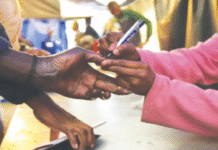Flyovers have flattered to deceive in Dhaka, often exacerbating the traffic problems they were meant to solve
Even though flyovers can be effective in reducing travel time, in Dhaka they often contribute to traffic congestion because of faulty design and shortsighted planning, experts say. Most of the flyovers opened with fanfare recently have been off-ramped at intersections, bringing vehicles converging to a traffic stop instead of going over it.
Flyovers can also cause congestion when the road capacity is full during peak hours and if the volume of vehicles travelling during that time is greater than the capacity of the flyover, which has consistently been the problem with the flyovers in Dhaka.
Experts that the Dhaka Tribune spoke to – Professor Shamsul Hoque of the department of civil engineering at Bangladesh University of Engineering and Technology (Buet) and Dr Sarwar Jahan of the department of urban and regional planning, Buet -agreed that flyovers actually increase traffic rather than decrease them and will probably have to be demolished in the near future.
“I think the solution to traffic gridlock in Dhaka is public transport and traffic management as opposed to building flyovers which will eventually have to be demolished,” said Professor Shamsul Hoque.
Traffic management is the planning, monitoring and control of traffic. It is supposed to maximise the use of existing road space, using traffic operations enforcement, materials and equipment to achieve safe and efficient movements.
Traffic management science is dedicated to measuring speed, volume and density on roads to understand how the butterfly effect, free flow and congestion speed can be managed. In Bangladesh however, our biggest problems seem to be the tragedy of the commons-where one acts for himself instead of the common good and the fact that we only use 10% to 20% of usable road space because of road side parking, random bus stops and mismanaged lanes. Our moving speed is usually dictated by the slowest vehicle on the road, which are rickshaws that even clog the roads after 9pm.
When flyovers are added to this system without proper traffic management they function more like ramps
Data from the World Bank shows that in the last 10 years, the average traffic speed has dropped from 21 km/hour to 7 km/hour, only slightly above the average walking speed. Congestion in Dhaka eats up 3.2 million working hours per day.
DMP’s Joint Commissioner of Traffic (South) Mofiz Uddin Ahmed told the Dhaka Tribune that they use a system called the DMP traffic management system, which is mainly a manual endeavour that assesses which roads need more clearing by the volume of cars present at a given moment.
When flyovers are added to this system without proper traffic management or designated lanes for certain vehicles and without rapid mass transit system (the progress of which has only been 12% in the last four years) they function more like ramps than reducing travel time.
The Moghbazar-Mouchak flyover attracted widespread criticism for two consecutive cost hikes and its faulty design; it was mistakenly designed for driving on the right side whereas, Bangladeshis roads drive on the left side.
Then there was the fact that the flyover pillars were randomly placed considering the utility lines along with a number of unnecessary dividers forcing traffic flow to slow down.
Moreover, this is the first flyover which will have traffic signals at the Mouchak and Malibagh intersection whereas such infrastructures are generally built to allow uninterrupted traffic flow.
A lot of these flyovers are constructed without consulting the Revised Strategic Transport Plan (RSTP) prepared by the Dhaka Transport Authority (DTCA) such as the Kuril flyover, Mayor Hanif flyover built by Dhaka South City Corporation (DSCC), and the soon to be opened the Moghbazar-Mouchak flyover, supervised by the Local Government Engineering Department.
“People who make them, have no accountability and this is affecting public movement. Every project has objectives. The Mogbazar-Mouchak flyover’s objective was fast traffic movement but these flyovers fall under two signals, negating the objective entirely. People who are responsible for building these flyovers do not even check if these objectives are met,” said Professor Shamsul Hoque.
Road Transport and Bridges Minister Obaidul Quader said on August 21 no government agencies will make any transport related plans in Dhaka and adjacent districts without consulting the Revised Strategic Transport Plan (RSTP).
“A number of agencies including Rajuk and city corporations will make plans at random to construct flyovers or such a road network which is not to be allowed from now. If any government body would like to construct any infrastructure under the RSTP it would have to be approved by Dhaka Transport Coordination Authority (DTCA). The authority will also supervise and coordinate the projects,” the minister had said.
However, the proposed Motijheel-Jhilmil flyover which was not included in the RSTP originally, has been pushed into the plan by the DTCA because of heavy political pressure, sources say. The flyover goes over the area where a Bus Rapid Transit is supposed to be.
The problem with political pressure regarding traffic management also extends to the elevated expressway, which is not being constructed according to the feasibility study. Because of the area that needed to be demolished for it, the plan met with strong resistance from local lawmakers and the government was forced to change the original design. As a result, the elevated expressway now crosses over the Mayor Hanif flyover at 70 feet, which probably will not come to fruition, according to experts.
Sources at Dhaka South City Corporation (DSCC) said after consulting with planners and engineers Mayor Mohammad Sayeed Khokon has decided to demolish all the dividers under the Mayor Mohammad Hanif Flyover to reduce traffic jam under the flyover.
However, the mayor has not been able to implement the plan because of a legal battle with the flyover’s private construction partner Orion Group.
Professor Shamsul Hoque thinks flyovers cannot offer traffic management during peak hours; they are at best temporary unsustainable solutions.
A study by Copenhagen Consensus Center found that the average traffic speed of Dhaka is now at 6.4kph. If the volume of vehicles continues to grow at the current pace, without substantial public transport support, the average speed of Dhaka’s traffic may fall to 4.7kph by 2035, which is essentially the speed of walking.
Dr Sarwar Jahan told the Dhaka Tribune:“When the government constructed the Mohakhali Flyover, the authorities concerned did not know that more flyovers will be built at Banani and Kuril on the same road.”
Finance Minister AMA Muhith, in his budget speech for FY 17-18 proposed an initiative to construct another flyover in Dhaka. “The 12km flyover from Shantinagar to Dhaka-Mawa road would be built to ease traffic congestion of the capital city,” he said.
If the solution to Dhaka’s ever growing traffic problem seems to be more public transport, then why is the government spending millions of dollars building flyovers that will eventually have to be demolished? In an attempt to treat the symptoms of the problem but not the problem itself, say experts, we are shooting ourselves in the foot by wasting public funds that could have been diverted towards developing the metro rail system and the rapid bus transit much faster.
Source: Dhaka Tribune










